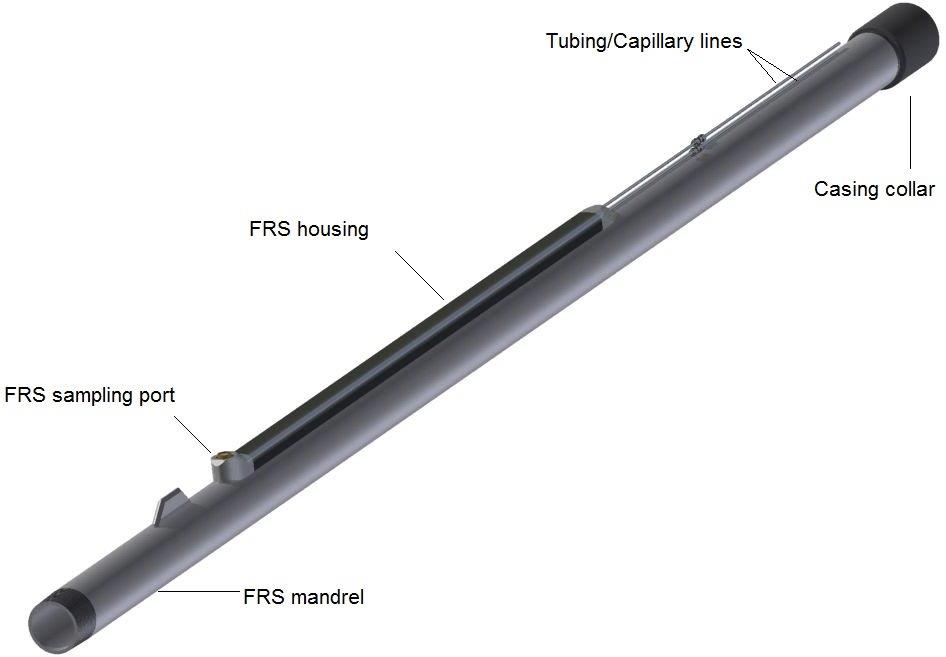Understanding small changes in the chemistry of subsurface fluids at the Aquistore site will help scientists better understand the effect of injected CO2 on the rock and liquids 3.4 km down – crucial research for confirming the predictability and safety of CO2 storage worldwide.
Just 150 metres away from the Aquistore CO2 injection well, an observation well drilled to the same 3.4 km depth is being used by research scientists to take a number of measurements in real time. One of the most impressive pieces of equipment designed specifically for Aquistore is an advance fluid recovery system (FRS). Developed at the University of Alberta, it is designed to allow reservoir fluids to be sampled and brought to the surface. Installed at a depth of 3300 m, the FRS is a loop of thin tubing that runs down the side of the well with a port that is in contact with the reservoir. This allows for pristine fluid samples to be taken directly from the formation, pumped up the tubing, and analyzed at surface.
“The FRS installed at Aquistore is extremely novel,” notes Dr. Rick Chalaturnyk, Foundation CMG Research Chair in Reservoir Geomechanics for Unconventional Resources at the University of Alberta. “It was installed on the outside of the casing to a depth of 3300 metres and, as such, does not interfere with other monitoring activities inside the observation well. It allows for fluid samples to be taken at pressures and conditions present at depth rather than atmospheric conditions at the surface.”
Typically, such fluid sampling could be contaminat ed by other materials such as drilling fluid, but samples from the Aquistore Fluid Recovery System are preserved in the same state and condition in which they were recovered.
ed by other materials such as drilling fluid, but samples from the Aquistore Fluid Recovery System are preserved in the same state and condition in which they were recovered.
Since 2014, multiple baseline samples have been recovered and are being analyzed. And with the injection of CO2, sampling has continued throughout the ongoing operations.
“By sampling fluids in real time as CO2 injection began, we can see chemical and other changes in fluid properties as the CO2 moves away from the injection well [150 metres away] to past the observation well. These downhole fluid properties can then be integrated with other subsurface property measurements being made around the observation well, such as pulsed neutron logging and seismic measurements, to provide evidence for CO2 plume migration and conformance,” Chalaturnyk observes.

